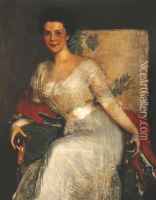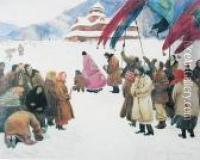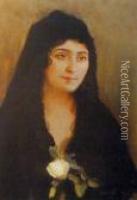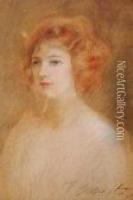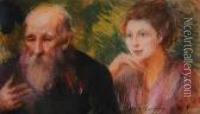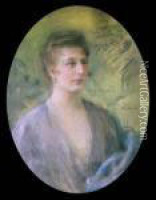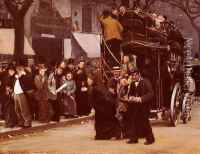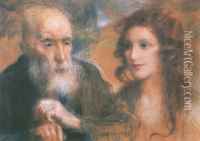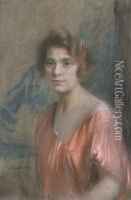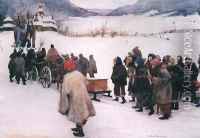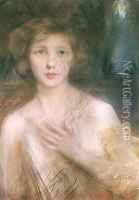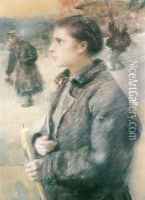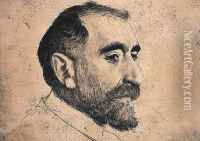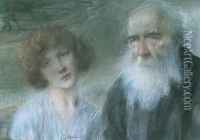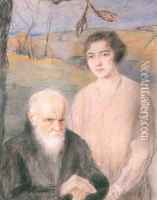Teodor Axentowicz Paintings
Teodor Axentowicz was a prominent Armenian-Polish painter and university professor. He was born on May 13, 1859, in Brașov, which was then part of the Austrian Empire and is now in Romania. Axentowicz showed an early interest in the arts and began his formal training at the School of Fine Arts in Kraków in 1879. He furthered his education at the Academy of Fine Arts in Munich, where he studied under renowned artists such as Gabriel Hackl and Alexander Wagner.
Later, Axentowicz continued his studies in Paris, which was the epicenter of the art world at the time. He became influenced by the French Impressionists and developed his own distinctive style, which often featured elegant portraits and scenes of social life. His works reflect the fin-de-siècle atmosphere of Europe, with a focus on the beauty and melancholy of the era.
Axentowicz was also deeply involved in the artistic community and played a significant role in the development of Polish art. In 1895, he became a professor at the Jan Matejko Academy of Fine Arts in Kraków, where he mentored a generation of Polish artists. He was a co-founder of the Society of Polish Artists 'Sztuka' (Art), which was instrumental in promoting modern art in Poland.
He is perhaps best known for his series of paintings depicting Hutsul people, an ethnic group from the Carpathian region. These works are celebrated for their ethnographic accuracy and sensitive portrayal of the subjects' lives and culture. Axentowicz's work was well-received and exhibited internationally, including at the Exposition Universelle in Paris in 1900, where he received a gold medal.
During World War I, Axentowicz served as the head of the Committee for Relief of War Victims in Kraków. His experiences during the war influenced his later works, which often had a somber tone reflecting the hardships of the time.
Teodor Axentowicz continued to paint and teach until his death on August 26, 1938, in Kraków. His legacy is preserved in the form of his numerous paintings that reside in museums and private collections around the world, as well as his influence on the generations of artists he taught.
